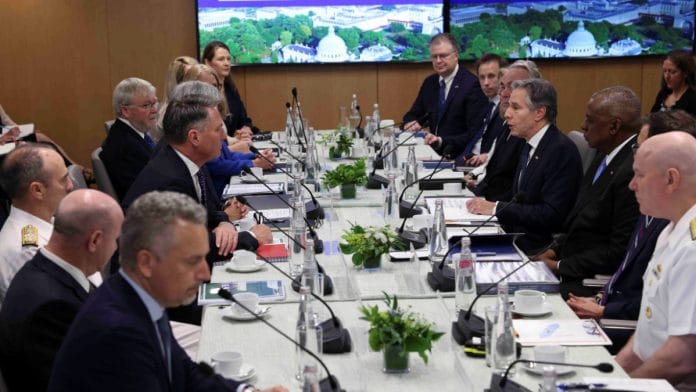New Delhi: With an eye on China, the US and Australia have decided to start the joint production of guided multiple-launch rocket systems (GMLRS) and have increased the rotational presence of American forces, bombers and others on Australian soil.
These decisions were taken after US Secretary of Defense Lloyd Austin, Secretary of State Antony Blinken, and their Australian counterparts, Deputy Prime Minister and Minister of Defence Richard Marles and Minister of Foreign Affairs Penny Wong, met in Annapolis, Maryland, for the 34th Australia-U.S. Ministerial Consultations (AUSMIN).
“We are… increasing the presence of rotational U.S. forces in Australia,” Austin said at a joint press conference.
He added, “All this will mean more maritime patrol aircraft and reconnaissance aircraft operating from bases across northern Australia. It will also mean more frequent rotational bomber deployments”.
Both countries have decided to continue infrastructure investment at key Australian bases in the north, including Royal Australian Air Force (RAAF) bases Darwin and Tindal while adding new locations for force posture cooperation in base Learmonth, as well as expanding ongoing infrastructure work at bases Scherger and Curtin.
These locations are close to the South China Sea, allowing the US more options from which to operate.
Reuters reported last month that the U.S. military was building infrastructure in northern Australia to help it project power into the South China Sea if a crisis with China erupted.
In the country’s biggest defence shake-up since World War II, Australia last year decided to prioritise long-range precision strike capability, domestic production of guided weapons, and diplomacy.
Meanwhile, the US has also welcomed Australia’s planned infrastructure upgrades at Cocos (Keeling) Island, a joint statement said.
Both countries decided to conduct frequent rotational deployments to Australia across air, land, and maritime domains, including frequent rotations of bombers, fighter aircraft, and maritime patrol and reconnaissance aircraft, building on previous rotations at RAAF bases Amberley, Darwin, and Tindal.
The plan also involves prepositioning US Army equipment and materiel in Australia at Bandiana, with an aim to establish it as a longer-term location.
Both countries will also assess options for establishing an enduring logistics support area in Queensland, designed to enhance interoperability and accelerate the alliance’s ability to respond to regional crises.
Both sides also committed to institutionalising US cooperation with Australia’s Guided Weapons and Explosive Ordnance (GWEO) Enterprise for the co-production of GMLRS by 2025.
(Edited by Tikli Basu)






